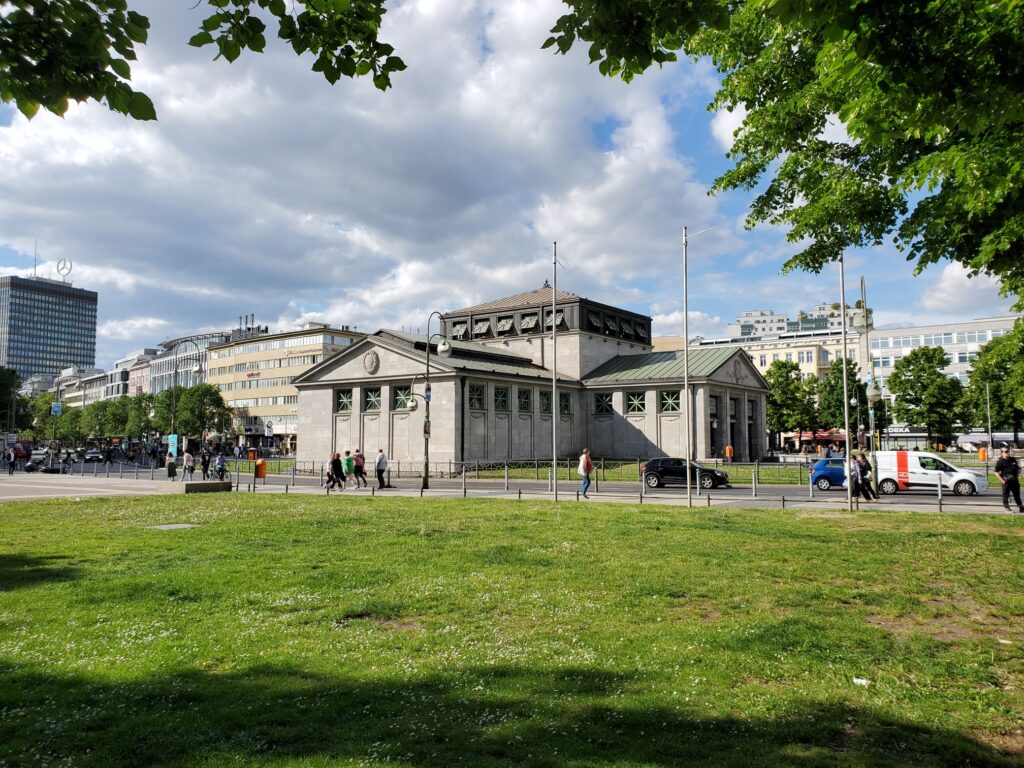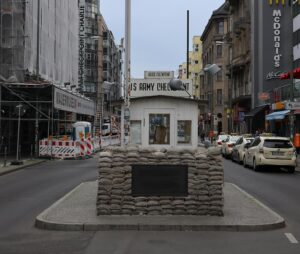What’s the first thing you do when you visit a new city?
Most people look up.
The skyscrapers, the architecture, the flashing signs and the elevated trains all command attention. And that makes sense, they’re certainly striking and a big part of what you came for.
Berlin captures this experience, offering a sensory feast for the eyes and ears.
But let’s be honest. What grips most people’s imagination when they visit the German capital is its turbulent history. If you’ve been to Berlin, the city’s haunted past may even have been the main reason for your trip.
Important for many Berlin visitors – The City´s Turbulent History – You find it also Outside the Museums
Like many visitors, you may find your thoughts drifting back over the past century and a half, pondering whether certain buildings bore witness to, let’s arbitrarily say, those now infamous cheers that greeted the Kaiser’s declaration of the Great War’s commencement.

You might, later the same day, wonder if your hotel or flat rental was there in time for the wild Weimar years of the 1920s, when much of the modern world was born.
Perhaps on a taxi ride you might glance out the window and wonder if that old brick factory building, looking desolate today, saw Hitler’s years in power. Perhaps it was built later, in time for the birth of the Communist state, the DDR, one of the first communist entities to have been assembled in the homeland of Karl Marx.
When in Berlin You might wonder: What was it really like here when…?
In short, your mind will find itself wandering over the city scape, gravitating towards seemingly random buildings and squares and then poking at them, using your imagination to shake loose their stories. You’ll find yourself consciously (or otherwise) repopulating the place with the Nazi Brownshirts of the 30s or mohawk-wearing punks of the 80s.
Berlin is probably the best place on earth to let your imagination off its leash, letting it endlessly ask «what was it really like here when…»?

But if you want to get more than a glimpse of the past, then stop looking up and instead head underground and use the U-Bahn. There, later in the evening, or early in the morning before the crowds hit, you can experience the odd sensation of having flashes from the past suddenly catch the corner of your eye, or whisper a snippet of a story in your mind’s ear. For Berlin’s train stations are well preserved and well restored, and they capture the spirit of bygone eras better than many of the buildings above ground.
Take for example the temple-like entrance to the Wittenberg U-Bahn station. Built to evoke a classical monument, the structure you see today was built in 1912-1913. Despite renovations and repairs, walking inside the above ground entrance building is like suddenly stepping back in time. The walls are decorated with paintings that evoke 1920s Berlin in all its energy and chaos. The iron railings and yellow wall tiles allow your mind to plunge itself back yet earlier, to the heady days of the Kaiser, when Berlin was the pulsing capital of Imperial Germany, a headstrong new nation throwing its weight around the global stage and full of a confident, muscular self-assurance.
Linger in that central concourse and imagine now right-wing Freikorps members running through it in the dangerous days of the German revolution in 1919 and its aftermath, when Germany was scrambling to find its way as a humbled and defeated power facing shocking disruption and disillusion.
Wittenbergplatz station bears witness to it all.
Then let your imagination populate the station and its underground platforms with sinister looking figures in Nazi era uniforms. Those men, who led Germany to ruin, were not to be seen in 1945 when Soviet troops from across the world’s largest nation stormed into the U-Bahn station, intent on conquest and revenge.

Wittenbergplatz remained in the Allied sector of the city after the Cold War broke out and if you like, you can imagine spies stepping quietly done the very steps you’re now walking down, heading for a train and a discreet rendezvous.
Being Home of Siemens – Berlin became a Pioneer for Urban Rail Transport
One of the reasons that this station is a bit more grandiose than its companions nearby is that it played host to shoppers, from the days of Willhelm II to toddling ay, coming to visit the magnificent KaDeWe department store standing proudly next door. The station was built to reflect that commercial might of Imperial Germany and decades later in the Cold War it served to showcase the wealth and freedom of West Berlin over its grimmer sister East Berlin not too far down the tracks.
Wittenbergplatz Station – Serving U1, U2,U3 – The three first Lines
When you board a train here, or anywhere in the old city, you’re boarding a new train of course. Yet simple logic tells you that the trains today are the same size as they were over a century ago. The tracks follow the same path to the same destinations. As you ride those rails, you’re riding along with the ghosts of untold millions over the many decades who did the same thing you’re now doing.

So, in the stillness of the early morning, as you descend those footworn stairs, looking at the same walls and walking those identical platforms and boarding your train to your next destination, whose footsteps will you be thinking of? Will your journey remind you of some SS killer heading home on leave from the bloody Eastern Front in 1942? Or perhaps you’ll be reminded of a Jewish family enjoying a day out in the days before that blackest of shadows fell? Or a Soviet spy, following a lead.
Or, perhaps, you’ll just think of the proverbial «everyman,» any one of the countless people over the generations, a person of no particular importance, a person just going to work. Or just going to see the sights, as you are today.
In Berlin History is Everywhere – Also Below Ground
And consider yourself to now be a part of that very same story. By virtue of you getting on that train riding those rails, you’ve now become a part of the Berlin story. And who knows, maybe one day, somebody will try to imagine what it must have been like to go down into the tunnels in the 20s of the 21st century. You’re a part of history now, preserved underground.
In Berlin, look down as often as you look up. And welcome to the story…




